OCTOBER 31, 2018
 Tuesday, October 30, 2018 at 10:46AM
Tuesday, October 30, 2018 at 10:46AM 
It has been 50 years since the original COPO Camaro special-order performance models were introduced, and now Chevrolet has come up with something completely different: The eCOPO Camaro Race Car Concept. Built in partnership with pioneering electric drag racing team Hancock and Lane Racing, the eCOPO is entirely electric powered, driven by an electric motor providing the equivalent of more than 700HP and 600 lb.-ft. of torque. It is expected to have a 9-second quarter mile time, according to Chevrolet PR minions. The eCOPO Concept breaks new ground with its unique motor and GM’s first 800-volt battery pack, while also supporting faster recharging, which is important for the limited time between elimination rounds in drag racing. “Eight-hundred volts is more than twice the voltage of the battery packs in the production Chevrolet Volt and Bolt EV, so the eCOPO pushes into new technological territory,” says Russ O’Blenes, director, performance variants, parts and motorsports at General Motors. “As GM advances its electrification leadership, a big step might just come from the drag strip.” The eCOPO Camaro Race CarConcept made its debut at the SEMA show in Las Vegas this week.


Honda introduced its Rugged Open Air Vehicle concept at the 2018 SEMA show in Las Vegas. The Rugged Open Air Vehicle concept is based on Honda's Ridgeline pickup and its Pioneer 1000 side-by-side "to create the ultimate open-air off-road Honda adventure vehicle," according to Honda PR minions. Designed and developed by Honda R&D Americas, the Rugged Open Air Vehicle concept is "a physical thought exercise of what the ultimate off-road Honda four-wheeled vehicle could look like." While the Rugged Open Air Vehicle is a concept, it nonetheless uses existing Honda components, such as modified Ridgeline body and suspension, along with production Pioneer doors and custom designed bed and tailgate panels modeled after the Pioneer. The Ridgeline-based interior has been modified for a life exposed to the outdoors and features a Pioneer 1000 steering wheel adapted to the Ridgeline steering column, along with Civic Type R seats re-skinned in waterproof Pioneer 1000 material, smartphone holders from RAM Mounts, and durable paint-on surfaces to protect the exposed instrument panel from the elements.

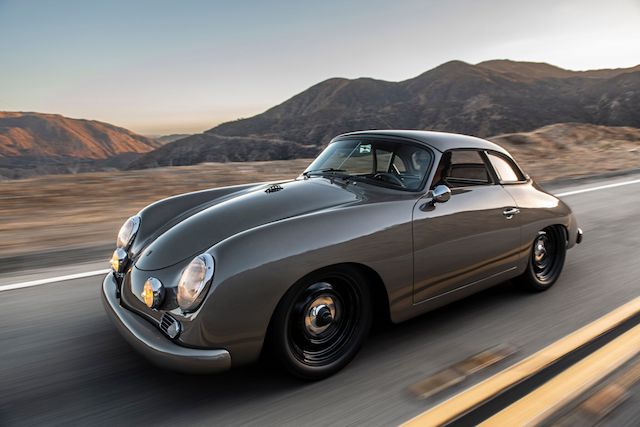
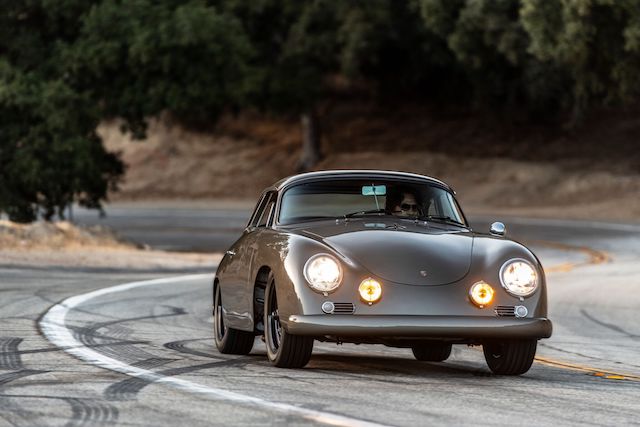 Power is supplied by the new Emory-Rothsport “Outlaw-4” engine. Emory collaborated with Porsche GT racing team crew chief Jeff Gamroth of Rothsport Racing to create an all-new air-cooled four-cylinder engine block, based on the dry-sump Porsche 3.6L Type 964 engine. Custom cam housings, camshafts, and crankshafts are designed to work with OE Porsche engine components. Chassis modernizing was also part of the plan. Emory adapted early Porsche 911 independent rear suspension with custom-narrowed trailing arms. Adjustable Koni shocks control the ride. Handling is improved with a proprietary Emory four-wheel disc-brake system, which stops the 205/55ZR16 Pirelli P Zero Rosso tires on custom 15x6 billet alloy wheels. The wheels were powder-coated black and have mirror-polished hubs.
Power is supplied by the new Emory-Rothsport “Outlaw-4” engine. Emory collaborated with Porsche GT racing team crew chief Jeff Gamroth of Rothsport Racing to create an all-new air-cooled four-cylinder engine block, based on the dry-sump Porsche 3.6L Type 964 engine. Custom cam housings, camshafts, and crankshafts are designed to work with OE Porsche engine components. Chassis modernizing was also part of the plan. Emory adapted early Porsche 911 independent rear suspension with custom-narrowed trailing arms. Adjustable Koni shocks control the ride. Handling is improved with a proprietary Emory four-wheel disc-brake system, which stops the 205/55ZR16 Pirelli P Zero Rosso tires on custom 15x6 billet alloy wheels. The wheels were powder-coated black and have mirror-polished hubs. 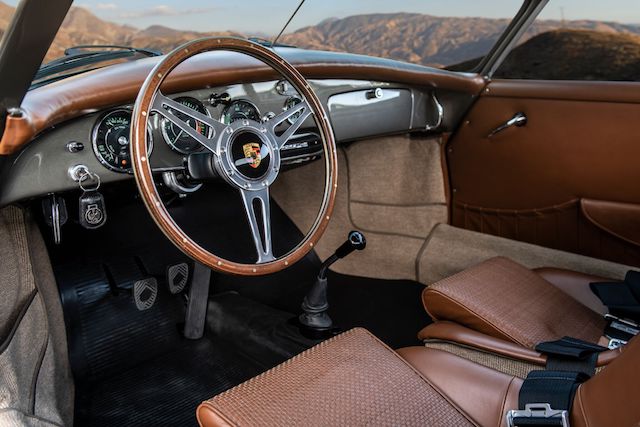 John Oates worked directly with Rod Emory to map out the interior cabin. Hydes cognac leather is showcased throughout. The Speedster-style seats received basket-weave inserts. German square-weave carpet in is augmented by traditional rubber floor mats. A removable roll bar was added in case Oates decides to track his 356.
John Oates worked directly with Rod Emory to map out the interior cabin. Hydes cognac leather is showcased throughout. The Speedster-style seats received basket-weave inserts. German square-weave carpet in is augmented by traditional rubber floor mats. A removable roll bar was added in case Oates decides to track his 356.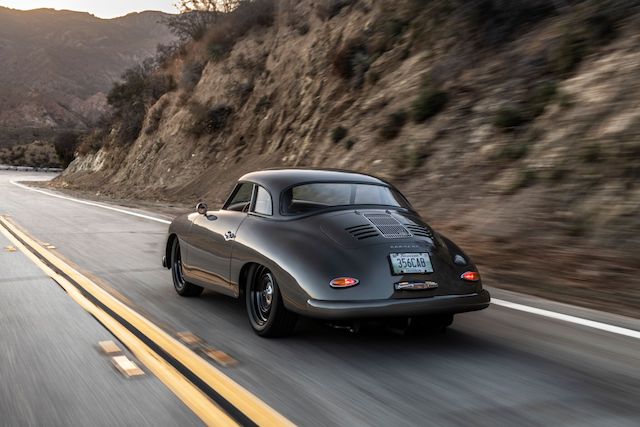
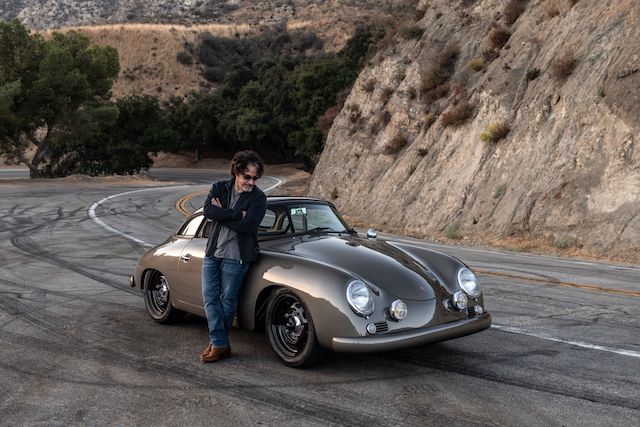
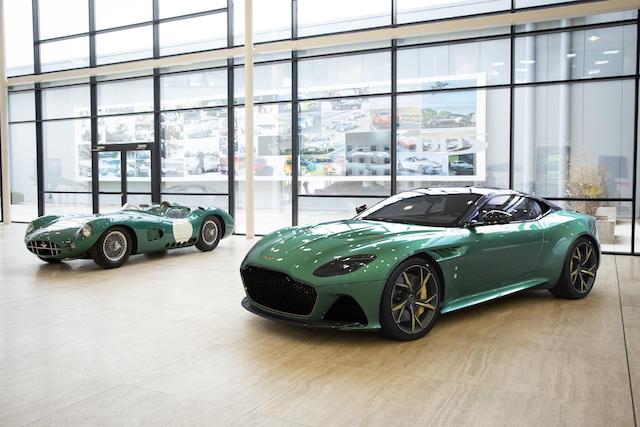
Aston Martin is churning out special editions and limited production models at a furious rate. When you're a one-trick manufacturer, that's what you do in order to survive, apparently. The latest ultra-special edition commemorates Aston Martin’s historic 1-2 finish in the 1959 24 Hours of Le Mans with its iconic DBR1. Aston Martin Cambridge has commissioned a collection of 24 DBS Superleggeras – one for every hour of the legendary endurance race - called the ‘DBS 59’. Aston Martin’s outright victory in the 1959 24 Hours of Le Mans is the stuff of motorsport legend. Facing stern opposition from works Ferrari and Porsche entries, plus a team of Ecurie Ecosse Jaguars, the David Brown Racing Aston Martin DBR1s fought valiantly to score a famous 1-2 finish. Since described by Sir Stirling Moss – who helped Aston Martin win the 1959 World Sportscar Championship – as ‘the most important Aston Martin ever produced,’ the DBR1 has deservedly attained iconic status. Just five were built between 1956 and 1959, making it one of the rarest Aston Martins ever, and when one last went to auction (at Monterey in 2017) it set a new world record as the most valuable British-made car ever with a sale price of £17.5m ($22.5m). Immediately identifiable by its Aston Martin Racing Green paint, the DBS 59 features extensive use of gloss finish Carbon Fiber on the roof, roof strake and painted bonnet louvers. A classic combination of Obsidian Black and Chestnut Tan leather is used throughout the interior, together with fabric inspired by the DBR1 seat material used to trim the ‘DBS 59’s’ seat backs and door inserts. Bronze detailing is strategically deployed around the exterior and interior, with the front grille surround, ‘Superleggera’ bonnet script, rear Aston Martin script and Q Fender Badge amongst the items painted. Additional Q by Aston Martin detailing include bespoke Saddle Leather Helmet Pods in the rear compartment to hold special ‘DBS 59’ crash helmets, race suits and gloves, and a bespoke ‘DBS 59’ logo embroidered in the seat headrests. Each of the ‘DBS 59s’ will be identifiable by a small painted white roundel adjacent to the side strakes, with each car numbered from 1-24. Further accessories include period blue race overalls complete with Aston Martin and ‘DBS 59’ logos; replica string-backed racing gloves modeled on those worn by 1959 Le Mans-winning driver Carroll Shelby; replica 1959 race helmet; bespoke 2-piece luggage set to match interior trim; bespoke car cover in Aston Martin Racing Green and featuring white roundels with specific edition number. If you're reading this, these 24 machines have probably already been spoken for.
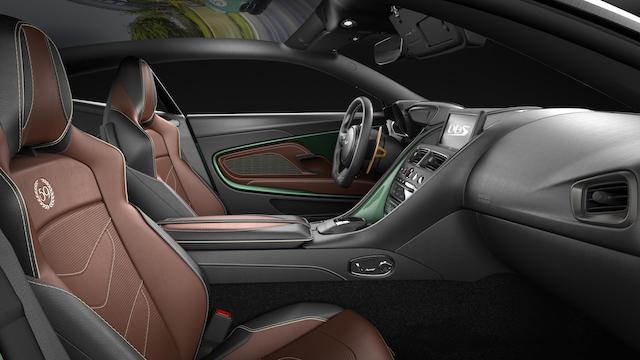 (Aston Martin The Americas)
(Aston Martin The Americas)
Alfa Romeo Stelvio Update. Editor-in-Chief's Note: The miles have been coming a little slowly on the Stelvio at just over 6,000 at this point, but the characteristics that are so pleasing about the car remain strong. Not to beat this to death, but the way the Stelvio drives and the way it feels remain the main attraction for me. Having spent a fair amount of time in a second-generation standard Porsche Cayenne a while back, which was ponderous, sluggish and underpowered, the Stelvio is lively and light on its feet to the point that you feel like you're driving a sport sedan with a little extra ground clearance, which is exactly what it is. The fact that it's based on the Giulia architecture means that the Stelvio is a star on the road, and I just can't stress that enough. Another strength is the Stelvio's exterior and interior design. I still get unsolicited comments from people at gas station stops for instance, and they're all positive about the look of it. And I concur, because the Alfa designers got it right. Plus the interior is simple and tasteful in its design, and the harman kardon audio system is terrific, with excellent overall sound quality. My biggest criticism of the vehicle remains the cheap feel of the shifter. I've gotten used to it by now, but that's something that the True Believers at Alfa Romeo need to address first and foremost. Add to all of this the fact that the Stelvio shares similar positive attributes with the Crossover/SUV genre, meaning that is is easy to get in and out of and offers utility and versatility for the day-to-day of life, and you have a winning combination. Problems? I have had two recalls on the Stelvio, both involving re-flashes of the computer that each took less than one hour, start to finish. And I must say that my local dealer - Golling Alfa Romeo - performed these adjustments efficiently and professionally. So, here we are. After seven months I can say that the Alfa Romeo Stelvio was worth taking a chance on, and I am still very pleased with it. -PMD




